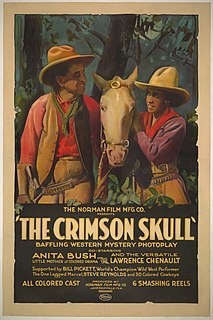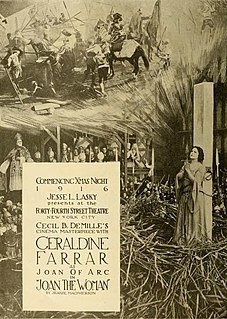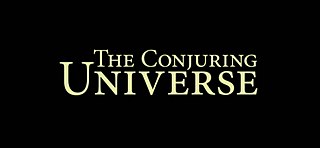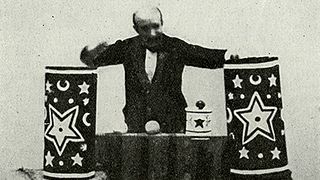Related Research Articles

Hoodoo is a set of spiritual practices, traditions, and beliefs which were created and concealed from slaveholders by enslaved Africans in North America. Hoodoo evolved from various traditional African religions and practices, and in the American South, incorporated various elements of indigenous botanical knowledge. Hoodoo is an African Diaspora tradition created during the time of slavery in the United States, and is an esoteric system of African-American occultism. Many of the practices are similar to other African Diaspora traditions as the practices come from the Bakongo people in Central Africa. During the transatlantic slave trade, about 40 percent of Africans taken to the United States were Bantu-Kongo. Hoodoo is a syncretic spiritual system that combines Christianity, Islam brought over by enslaved West African Muslims, and Spiritualism. This tradition is part of the African-American cultural heritage of spirituality and religion. Following the Great Migration of African-Americans, Hoodoo spread throughout the United States. Practitioners of Hoodoo are called rootworkers, conjure doctors, conjure man or conjure woman, root doctors, Hoodoo doctors, and swampers. Regional synonyms for Hoodoo include conjure or rootwork.

Charles Waddell Chesnutt was an American author, essayist, political activist and lawyer, best known for his novels and short stories exploring complex issues of racial and social identity in the post-Civil War South. Two of his books were adapted as silent films in 1926 and 1927 by the African-American director and producer Oscar Micheaux. Following the Civil Rights Movement during the 20th century, interest in the works of Chesnutt was revived. Several of his books were published in new editions, and he received formal recognition. A commemorative stamp was printed in 2008.

Oscar Devereaux Micheaux was an author, film director and independent producer of more than 44 films. Although the short-lived Lincoln Motion Picture Company was the first movie company owned and controlled by black filmmakers, Micheaux is regarded as the first major African-American feature filmmaker, a prominent producer of race films, and has been described as "the most successful African-American filmmaker of the first half of the 20th century". He produced both silent films and sound films.

Evelyn Preer, was a pioneering American stage and screen actress and jazz and blues singer of the 1910s through the early 1930s. Preer was known within the black community as "The First Lady of the Screen."

Le Manoir du diable or The House of the Devil, released in the United States as The Haunted Castle and in Britain as The Devil's Castle, is an 1896 French short silent film directed by Georges Méliès. The film, which depicts a brief pantomimed sketch in the style of a theatrical comic fantasy, tells the story of an encounter with the Devil and various attendant phantoms. It is intended to evoke amusement and wonder from its audiences, rather than fear. However, because of its themes and characters, the film has been considered to technically be the first horror film. Such a classification can also be attributed to the film's depiction of a human transforming into a bat, a plot element which has led some observers to label the work the first vampire film. The film is also innovative in length; its running time of over three minutes was ambitious for its era.
African-American folktales are the storytelling and oral history of enslaved African Americans during the 1700-1900s. These stories reveal life lessons, spiritual teachings, and cultural knowledge and wisdom for the African-American community African-American cultural heritage. During slavery, African-Americans created folk stories that spoke about the hardships of slavery and created folk spirits and heroes that were able to out wit and out smart their slaveholders and defeat their enemies. These folk stories gave hope to enslaved people that folk spirits will free them from slavery. Many folktales are unique to African-American culture, while others are influenced by African, European, and Native American tales.
Renee Stout is an American sculptor and contemporary artist known for assemblage artworks dealing with her personal history and African-American heritage. Born in Kansas, raised in Pittsburgh, living in Washington, D.C., and connected through her art to New Orleans, her art reflects this interest in African diasporic culture throughout the United States. Stout was the first American artist to exhibit in the Smithsonian's National Museum of African Art.
Conjuration or Conjuring may refer to:

Lawrence Chenault was an American vaudeville performer and silent film actor. He appeared in approximately 24 films between years 1920 and 1934; most of his performances were in films directed by pioneering African-American filmmaker Oscar Micheaux. His brother, Jack Chenault, was also a film actor.

Joan the Woman is a 1916 American epic silent drama film directed by Cecil B. DeMille and starring Geraldine Farrar as Joan of Arc. The film premiered on Christmas Day in 1916. This was DeMille's first historical drama. The screenplay is based on Friedrich Schiller's 1801 play Die Jungfrau von Orleans. This film was considered to be the "first cinematic spectacle about Joan of Arc."
The House Behind the Cedars is a 1927 silent race film directed, written, produced and distributed by the noted director Oscar Micheaux. It was loosely adapted from the 1900 novel of the same name by African-American writer Charles W. Chesnutt, who explored issues of race, class and identity in the post-Civil War South. No print of the film is known to exist, and it is considered lost. Micheaux remade the film in 1932 under the title Veiled Aristocrats.

The Leopard Woman is a 1920 American silent adventure romance drama film starring Louise Glaum, House Peters, and Noble Johnson. Directed by Wesley Ruggles and produced by J. Parker Read, Jr., the screenplay was adapted by H. Tipton Steck and Stanley C. Morse based on the novel The Leopard Woman (1916) by Stewart Edward White.

The Conjure Woman is a collection of short stories by African-American fiction writer, essayist, and activist Charles W. Chesnutt. First published in 1899, The Conjure Woman is considered a seminal work of African-American literature. A film adaptation, The Conjure Woman (film) was made by Oscar Micheaux.

The Conjuring is a 2013 American supernatural horror film directed by James Wan and written by Chad Hayes and Carey W. Hayes. It is the inaugural film in the Conjuring Universe franchise. Patrick Wilson and Vera Farmiga star as Ed and Lorraine Warren, paranormal investigators and authors associated with prominent cases of haunting. Their purportedly real-life reports inspired The Amityville Horror story and film franchise. The Warrens come to the assistance of the Perron family, who experienced increasingly disturbing events in their farmhouse in Rhode Island in 1971.
Pygmalion and Galatea is an 1898 French short silent trick film directed by Georges Méliès, based on the ancient Pygmalion myth.

The Conjuring 2 is a 2016 American supernatural horror film, directed by James Wan. The screenplay is by Chad Hayes, Carey W. Hayes, Wan, and David Leslie Johnson. It is the sequel to 2013's The Conjuring, the second installment in The Conjuring series, and the third installment in the Conjuring Universe franchise. Patrick Wilson and Vera Farmiga reprise their roles as paranormal investigators and authors Ed and Lorraine Warren from the first film. The film follows the Warrens as they travel to England to assist the Hodgson family, who are experiencing poltergeist activity at their Enfield council house in 1977 which later became referred to as Janet Hodgson's trickery.

The Conjuring Universe is an American media franchise and shared universe centered on a series of supernatural horror films. The franchise is produced by New Line Cinema, the Safran Company, and Atomic Monster Productions and distributed by Warner Bros. Pictures. The films present a dramatization of the real-life cases of Ed and Lorraine Warren, paranormal investigators and authors associated with prominent yet controversial cases of haunting. The main series follows their attempts to assist people who find themselves possessed by demonic spirits, while the spin-off films focus on the origins of some of the entities the Warrens have encountered.

The Forbidden Woman is a 1927 American silent drama film directed by Paul L. Stein and starring Jetta Goudal, Ivan Lebedeff and Leonid Snegoff. The film is set in French North Africa.

Conjuring is a 1896 French short silent film directed by Georges Méliès.
La Clownesse fantôme, released in the United States as The Shadow-Girl and in the United Kingdom as Twentieth Century Conjuring, is a 1902 French short silent film directed by Georges Méliès.